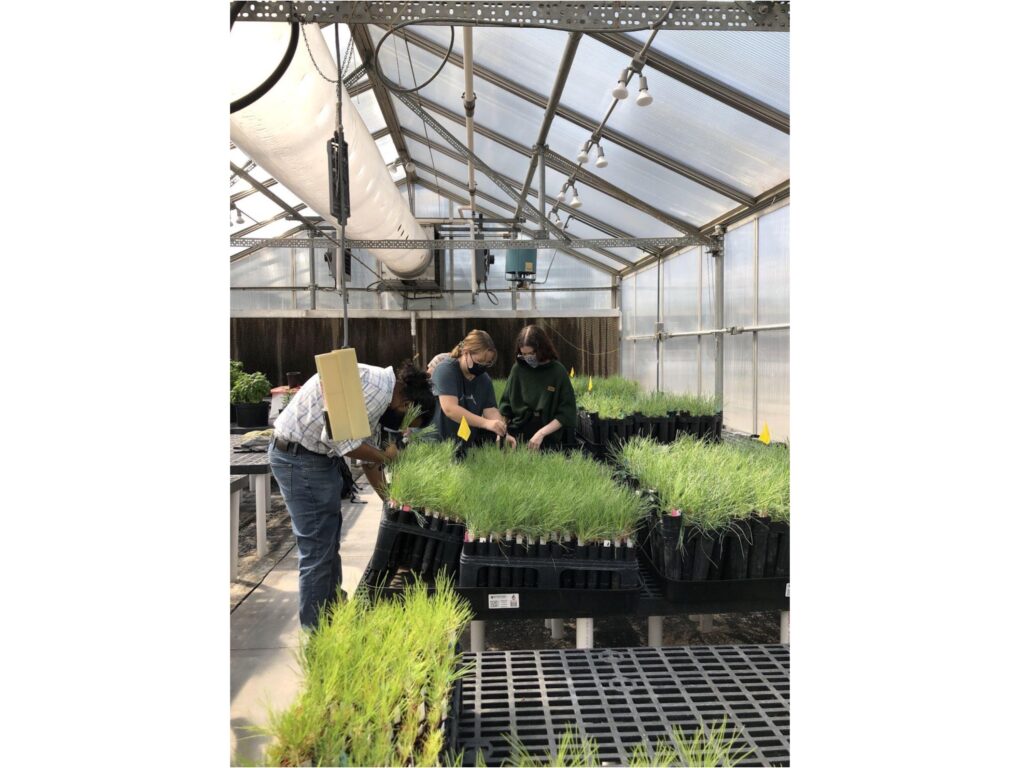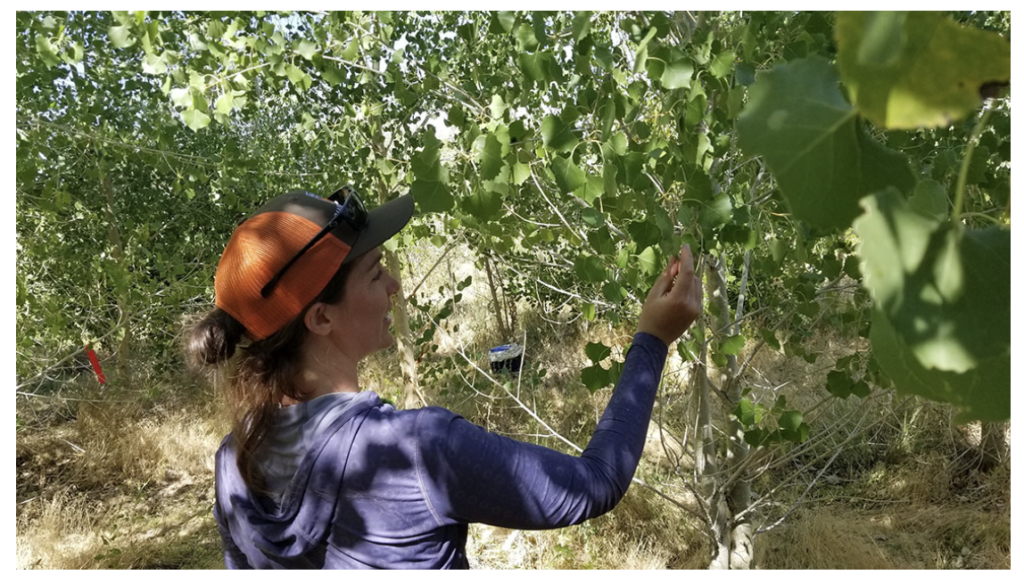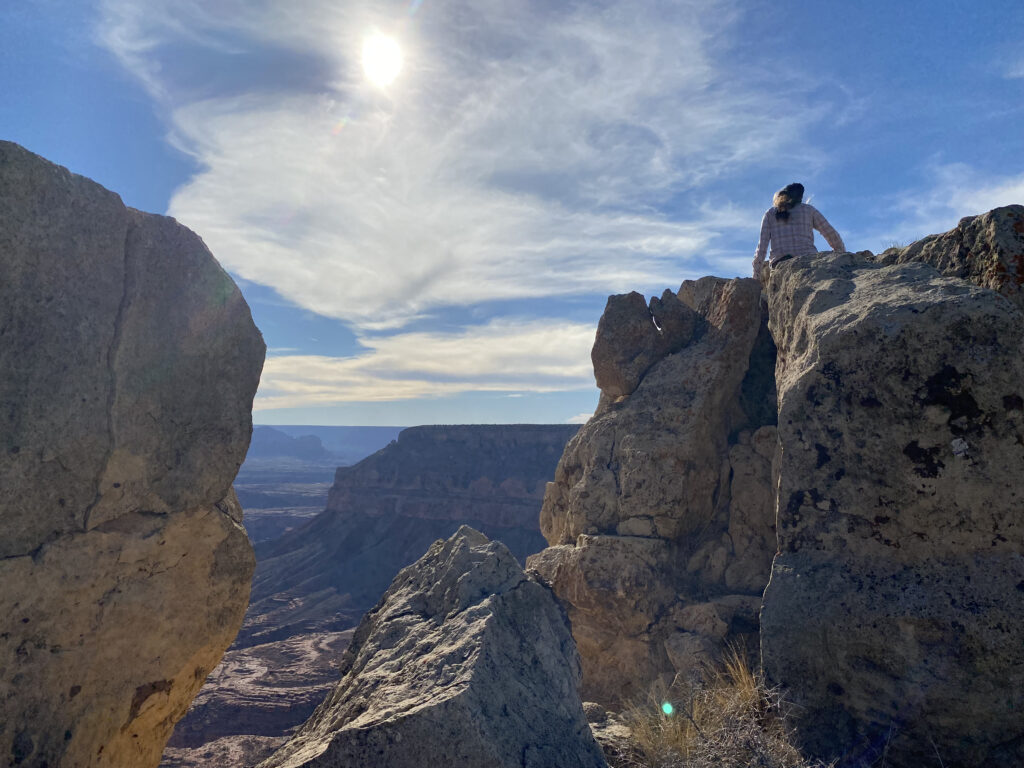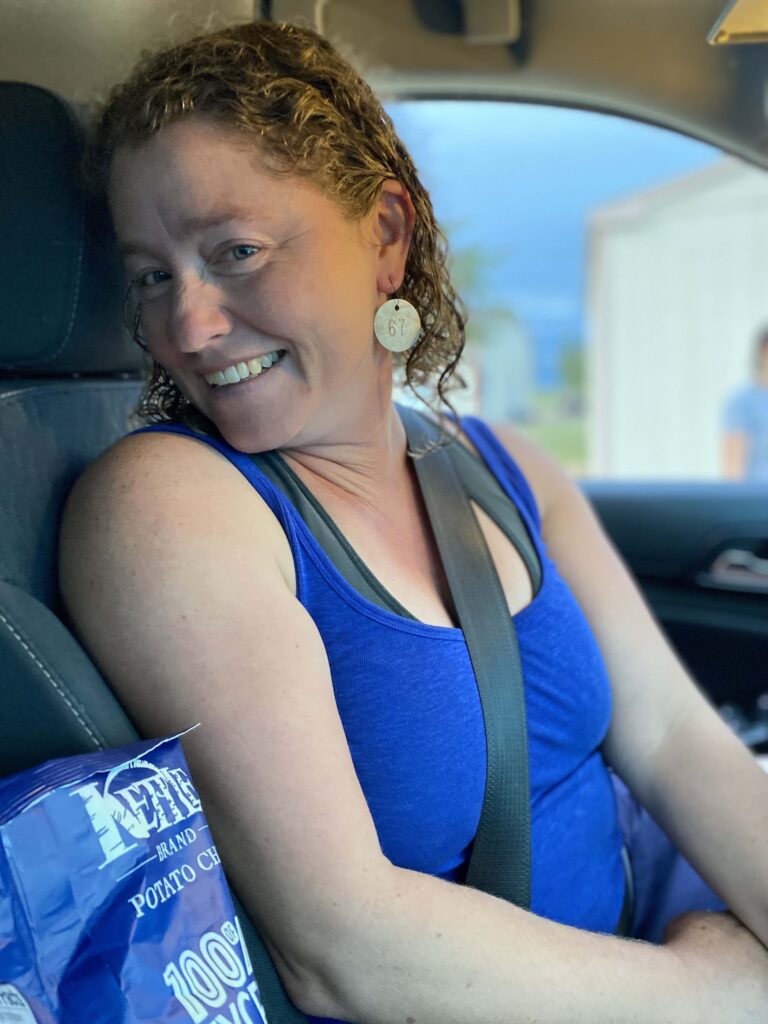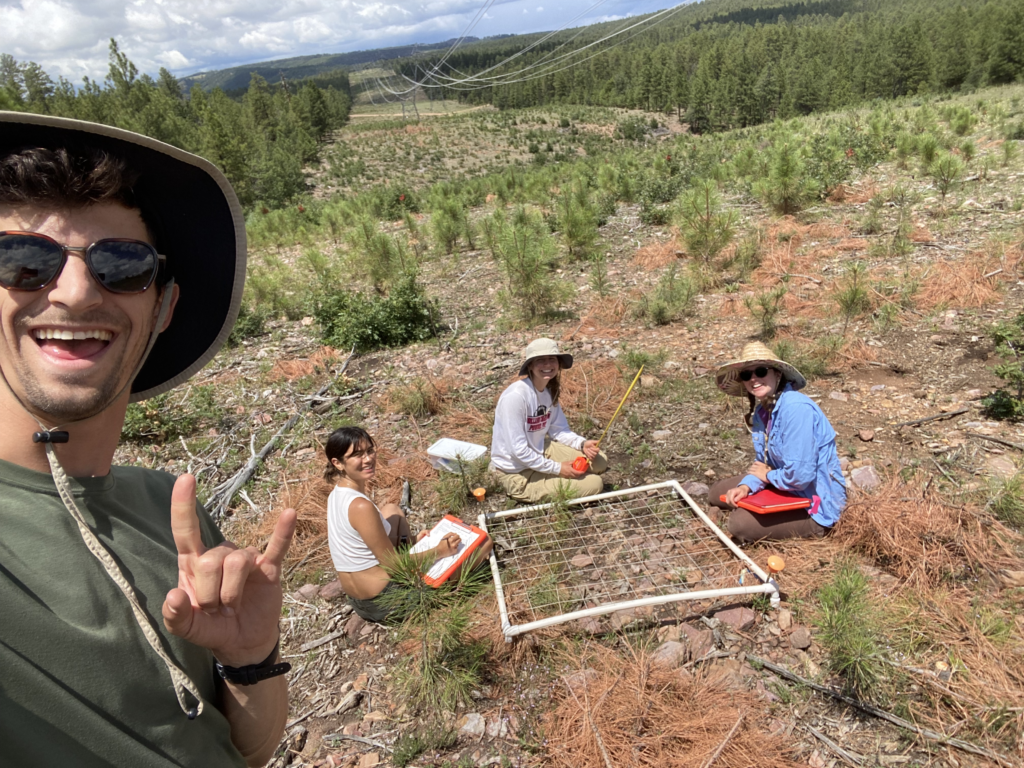
I’ve spent many hours deliberating the best ways to conjure up inspiration – listening to TED talks, reading inspirational books, or spending time in nature? My degree being in biology, I often gravitate toward the latter. Working as a field biologist would be a perfect job for me also as an aspiring writer, right? This summer, I soon realized that standing in ninety degree heat, being clawed at by the merciless shrub Robinia neomexicana, it was hard for me to think about anything other than the sparkling water waiting for me in the cooler.
At the end of our team’s first 10 hour day, consisting of staring at a PVC 1m x 1m quadrat and arguing if soil or vegetation made up 40% of the area, my brain was exhausted. I gulped down my sparkling water, the bubbles threatening to migrate up my nose. Mia and Scott were swaying in their hammocks, engrossed in reading their books. Moya sat down next to me with his notebook in hand.
“Poetry contest? Like we talked about earlier?”
Internally, I groaned. I wanted nothing more than to eat and go to bed. Instead, I grabbed my notebook from the car. “Sure.”
Moya flipped to an open page. “Scott and Mia, you give us a prompt.”
Scott smiled and spoke up first. “Vacuums.”
I wish I knew where Scott got his inspiration from, because I needed some right now.
I pleaded for extra time, arguing that I didn’t work well under pressure. Scott started the timer, and next to me, Moya scribbled away. I stared at my blank sheet of paper. Taking a deep breath, I forced myself to write something, and ideas turned into a poem.
Fifteen minutes was up, and I volunteered Moya to read first. “There’s never much dust, all the / surfaces are incredibly sticky…I pull, it’s 8:45 time to start the vacuuming / straight lines meet suction and I spiderweb across…floors of his mind / sweet dreams I mutter…”
When he’s done, I take a deep breath. “Chip crumbs / crack / knead into my bare feet…vacuum sucking / up the mess of my room / the mess of my life / a littered trail…the dirt will never vanish / it sparkles in the sun”
Applause by Scott and Mia greeted the reading of both Moya’s and my poems. They pointed out how Moya had taken a more figurative approach, while I had taken a more realistic approach. We’d both taken our unique perspectives on the world – I, coming from a background mostly in science, tended to take themes from the environment around me and tie them into a theme. Moya, on the other hand, had more training in sociology, and incorporated the abstract as a way to relate to himself and others in his writing. Complimentary, both these approaches provided a richer, fuller understanding of our prompt – vacuum cleaners.
My heart felt like it grew as Mia and Scott encouraged us. The inspiration was flowing.
Moya grinned. “More prompts.”
Surrounded.
The Devil.
Subtlety.
Space.
Raining Tortillas.
Each evening, we entertained the ponderosa forest surrounding our campsite with our emotion and laughter. And even though the days were long, the sun was hot, and the plant names were hard to remember, it was the comradery that made the days enjoyable. Scott was always examining a grass ligule, helping ID the grass that everyone else thought looked like all the other green grasses. Mia was always there to remind us of a plant name code we had forgotten. And at the end of the day Moya was always there with his pencil and lollipop in hand, ready to write.
Seeing the unique genius in each person was enough to inspire me to keep going, everyday.

